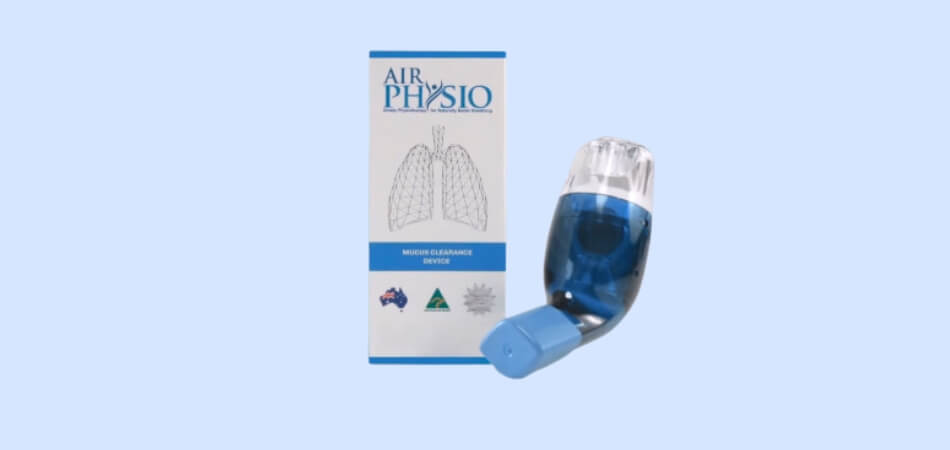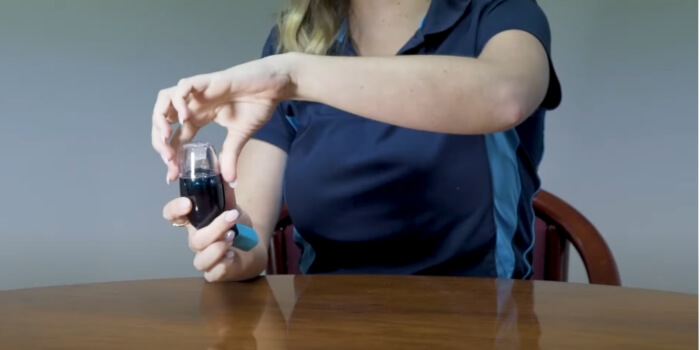What's so special about asthma inhalers' magic? Let's say you're gearing up for a rigorous workout, but dread the looming threat of an asthma attack. Here's the superhero of the story – the rescue inhaler.
A tiny device, yet it packs a punch, offering swift relief from the clutches of asthma symptoms. Inhalers aren't just about immediate relief; It's a bridge to normalcy for asthmatics. But, how long does it take for an inhaler to work?
Inhaler usually takes 15 to 20 minutes for symptoms to go away, with effects lasting four to six hours. Not just a quick fix, these inhalers also serve as a preemptive strike against exercise-induced asthma attacks.
Curious to learn more about this pocket-sized lifesaver? Stick around as we dive deeper into the ins and outs of inhalers.
Overview of Asthma Inhalers
Asthma inhalers, huh? They're like the trusty sidekicks for folks dealing with asthma. Think of them as compact devices that deliver medication straight to your lungs, making it easier to breathe.

There are mainly two types: the quick-relief inhalers for those sudden, “I can't catch my breath” moments, and the long-term control inhalers that work in the background, keeping your asthma in check day-to-day.
Now, using an inhaler seems straightforward, but there's a bit of an art to it. It's all about timing and technique to ensure the medicine actually gets where it needs to go. You reach for quick-relief inhalers during an asthma attack, offering relief in about 15 to 20 minutes.
On the other hand, long-term inhalers are more about prevention, helping to reduce the need for those quick-relief inhalers in the first place. It's a dynamic duo that works together to keep asthma at bay, letting you live your life more freely.
Types of Asthma Inhalers
If you're new to asthma inhalers, it can feel like exploring a treasure chest full of tools. These handy gadgets are life-changers for those navigating asthma waters.
But not all inhalers are crafted the same; they come in different types, each with its role in managing asthma symptoms.
Let's break it down, shall we?
Quick-Relief Inhalers
We're starting with quick-relief inhalers for when you're in a hurry. These are the heroes during an asthma flare-up, offering fast relief by relaxing the muscles around your airways. It's like they're saying, “Hey, let's calm down and open up those breathing passages!”
Long-Term Control Inhalers
Then there's the long-term control inhalers, the unsung heroes working behind the scenes. These are all about prevention, keeping inflammation in check, and making sure those sudden asthma attacks take a back seat.
Each type helps manage asthma symptoms and flare-ups one-two punch. Whether it's stopping an attack in its tracks or keeping peace in your airways, understanding your inhaler is the key to breathing easier.
AirPhysio is a unique respiratory device that utilizes oscillating positive expiratory pressure (OPEP) therapy, offering an alternative approach to traditional inhalers for airway clearance.
How to Use an Asthma Inhaler Correctly?
At first, using an asthma inhaler can seem like a puzzle. But once you get the hang of it, it's a breeze! Let's walk through the steps to ensure you're getting the full benefit of your inhaler.
Step 1: Shake It Up
Start by giving your inhaler a good shake. This mixes the medication inside, making sure you get the right dose.
Step 2: Get Ready
After that, remove the cap and hold the inhaler upright. Take a deep breath and exhale fully to prepare your lungs for the medication.
Step 3: Position the Inhaler
Now, it's time to position the inhaler. You can either place it directly in your mouth between your teeth and close your lips around it, or use a spacer. A spacer helps more medicine reach the lungs.
Step 4: Inhale Slowly
Press down on the inhaler to release the medication as you start to breathe in slowly and deeply through your mouth. This ensures the medicine travels deep into your lungs.
Step 5: Hold Your Breath
After inhaling, hold your breath for about 10 seconds, or as long as comfortable, to allow the medicine to settle in your lungs.
Step 6: Breathe Out
Finally, breathe out slowly and relax. Getting this routine down pat can make a world of difference in your asthma management. Practice makes perfect!
How Long Does it Take for an Inhaler to Work?
Have you ever stared at an inhaler, wondering, “How long does it take for this little gadget to work?” You're not alone. It's like waiting for a kettle to boil — except what's brewing is your ability to breathe easier.

Inhalers, especially rescue ones, are like friends who show up exactly when you need them, ready to bring relief. They're crucial for anyone with asthma, providing a quick fix to those pesky symptoms that can pop up unexpectedly or during physical activity.
Let's dive into the nitty-gritty of how these pocket-sized lifesavers work and how quickly you can expect to feel better.
Time to Relief
The main thing you're probably curious about is how fast you can go from feeling like a fish out of water to breathing easily. Rescue inhalers are designed to act fast.
Once you take a puff, you're on the clock for relief within 15 to 20 minutes. It's kind of amazing when you think about it — in the time it takes to watch a short TV episode, you can go from wheezing to breathing comfortably.
Duration of Effect
Now, let's talk about how long this wave of relief lasts. After your inhaler gives you that initial pick-me-up, the effects stick around for about four to six hours.
It's a handy window of time that covers a significant part of your day. Whether you're looking to get through a work meeting, enjoy a family dinner, or hit the gym, your inhaler has your back for a good stretch.
Preventive Use
Here's a pro tip: your rescue inhaler isn't just for moments of unexpected distress. If you've got a strenuous workout on your calendar or any activity that typically triggers your asthma, a preemptive puff can be your best defense.
It's like putting on armor before heading into battle, preparing your lungs for the challenge ahead. This proactive approach can help keep those asthma attacks at bay, letting you stay active and do what you love.
Is There Any Sign to Know that My Inhaler is Working?
Yes, there are definite signs that show your inhaler is doing its job. When you're grappling with asthma, and you reach for that inhaler, it's like sending out an SOS.

And trust us, the relief it brings isn't shy about making its presence known. Let's look at the signals that indicate your inhaler is on your side, fighting the good fight.
Immediate Relief
First off, the most obvious sign is the immediate easing of symptoms. If your inhaler is working, you'll notice that tightness in your chest starts to fade, and those daunting wheezes and coughs begin to quiet down. It's like the calm after a storm, bringing a sense of relief that's hard to miss.
Improved Breathing
Another clear indicator is the improvement in your breathing. You'll find it easier to take deep, full breaths without feeling like you're trying to suck air through a straw. This ease of breathing is a big sign that the medication is opening up your airways as intended.
Increased Activity Tolerance
Lastly, if you can engage in activities with less difficulty or need pauses due to asthma symptoms, it's a good indication that your inhaler is effective. Whether it's climbing stairs or going for a brisk walk, an increase in your activity tolerance is a positive sign.
The ability to recognize these signs can give you peace of mind and a sense of confidence in your asthma management plan. It's like knowing you have a reliable teammate in your corner, ready to help you breathe easier and live better.
FAQs
As you explore the world of inhalers, you likely have a few questions, right? It's like unlocking the next level in a game, and you're looking for the most effective strategies to navigate it.
Don't worry! We've got some of the most common inhaler-related FAQs lined up, with straightforward answers to clear the air. Let's jump right in and demystify some of these queries.
Do Inhalers Work Immediately?
Absolutely, yes! When you take a puff from your rescue inhaler, it jumps into action almost instantly. This means you can expect your breathing to start getting easier right away.
Can I Eat After Using an Inhaler?
It's best to use your inhaler before you eat. Why, you ask? Well, taking your inhaler first ensures that the medication has a clear path to your lungs and doesn't get sidetracked by a snack or meal.
How Long Do the Effects of an Inhaler Last?
The relief provided by a rescue inhaler isn't just a fleeting moment; it typically lasts between four and six hours. This duration gives you a good stretch of time with improved breathing, making daily activities and unexpected exertions more manageable. It's like having a buffer zone against asthma's unpredictability.
It doesn't have to be hard to use inhalers. With these answers in hand, you're better equipped to manage your asthma effectively and breathe easier.
Conclusion
After our conversation today, we've unraveled the mystery of “How long does it take for an inhaler to work?” and discovered it's pretty quick, offering relief in just 15 to 20 minutes!
With effects lasting up to four to six hours, these little devices are true lifesavers for anyone with asthma. We've also learned the importance of technique and timing in maximizing their effectiveness.
For those on the go, remember to keep your inhaler accessible and consider a preemptive puff before activities are known to trigger your symptoms.
This knowledge empowers you to manage your asthma confidently, ensuring smoother adventures and less worry about unexpected flare-ups. Safe travels and breathe easy!






